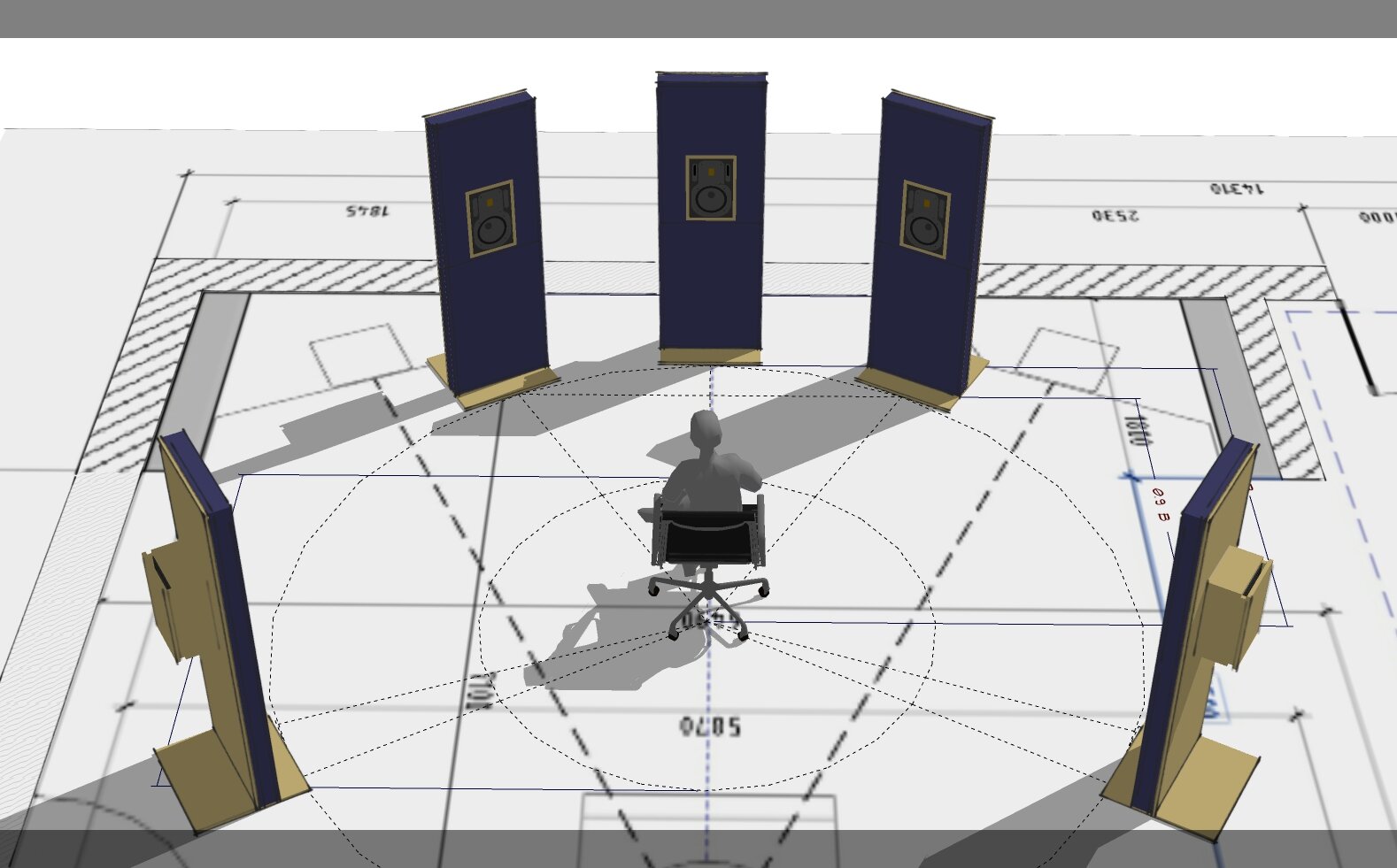-
Posts
2,176 -
Joined
-
Last visited
Posts posted by Glenn Stanton
-
-
setting on the VST scan logging has helped me more than once to find the offending VST and get it removed... Synth1 and a number of the SynthEdit based instruments seem to have problems even if the paths and permissions as all good. possibly just sloppy workmanship.
-
i think it's the middle 2 bullets for people who are even slightly interested. i'm playing around more and more with guitar (some Kontakt instruments and AAS Strum) and i think it's pretty cool. i've made a couple of custom maps to make it easier to use on some songs, but it's just really nice to compose something, then have the computer play the parts as if i taught someone...
-
one trick is to take the "tempo source" track (say a guitar or bass track), make a copy, remove a bunch of high end via a destructive EQ on the track, then drag that. sometimes the high(er) frequencies (e.g. pick noises, finger thumps on the body of an acoustic, etc) in a track can confuse the algorithms even in Melodyne. cutting the HF causes the overall tempo being exposed by the audio to smooth out bit.
-
 1
1
-
-
just create the individual drum tracks in a regular track folder. route the outputs of those tracks to a buss or two (i route kick to a separate buss and have a parallel compression buss for kit except OH, room, cymbals and kick). mix the tracks to taste then compact the folder. use the buss(es) to control overall drum in mix. use buss level effects (perhaps on other "effects" busses) like delays and reverbs to reduce plugin count and save processing power.
-
are you dragging the clip to the measures bar? Melodyne does a pretty good job of finding the tempo, notes, and depending on version, chords.
-
sure you can buy a third party mouse to use with Apple, but they still ship the one button thing... fwiw - i still have my 1988 macintosh with radius accelerator and radius 2-page BW high-res display... mint condition ?
-
matrix view? then midi notes to trigger a full play? say each matrix item would have 4 bars of midi, then each quarter note could trigger 4 bars and only "release" back to the triggering track and the next note. could lead to some interesting mixtures of timing and so on...
it would also be nice to have the scoring module "behave as written" with repeats, and other notational elements... ?
-
you can arrange your console so you have more access to busses. some some things like "drums" (or equiv synth bits) and "bass" (or equiv synth bits) etc as busses which are fed from multiple tracks allows you to easily concentrate on fewer controls, and nothing wrong with multiple "drums" busses with different mixes of the same drum parts (using sends for example) and effects to create wholly different song sections by swapping, cross-fades, blends... and also spend some time on aux tracks and patch points are various intermediate options for applying effects - one challenge for folks is there can be too many routing options ?
-
On 6/19/2021 at 5:54 AM, Jeremy Oakes said:
Plus the fact of having not to do repetitious actions.….
isn't your feature request to do repetitious playing for x # of measures based on musical score notation? there's no penalty for creating (in your example 99 measures) esp if the goal is to add something else along the way (like melody, harmony, sound effects, soloing etc), you'll need those measures anyways.
otherwise, maybe export the audio and run it in an audio player on loop until you're bored with it...
-
 1
1
-
-
same here. also switch between mono and stereo, plus use my single mono speaker physically set dead center and i tweak the levels on the speakers and the monitor controller (and sub etc) until they're all balanced for levels and panning. then anything i do in the "console" to pan etc works as expected. i'm wagering many people don't calibrate their system to compensate for deviations in their hearing, it would probably be a surprise to find people with perfectly balanced hearing...
-
you can insert a quote after you start a reply ? then the skys the limit as far as before quote and after quote commenting goes ?
8 hours ago, jonathan boose said:Question: If you quote a person, why won't the software allow you to type above the quoted post?
-
 1
1
-
-
18 hours ago, scook said:
The last version of SONAR with a status bar display was 8.5.
thanks. i never tried that approach - just using inputs as labels. we definitely need a CAL update - JavaScript would be really good, or Ruby ?
-
i do not know how to display the name once you've selected it. that would be nice though to be able to display the name of the file being executed.
maybe add the name into the string of an input parameter?
(do
(dword off_set 10)
(getInt off_set "HUMANIZE - Enter the offset percentage " 1 99)
)or a second input variable:
(do
(dword title 10)
(dword off_set 10)
(getInt title "HUMANIZE" 1 1)
(getInt off_set "Enter the offset percentage " 1 99)
)
another option: using a "message":
message
This CAL function allows you send output to your Cakewalk program’s status bar.(message <value> [ [value] … ])
i haven't tried this one but it might work as well.
also more CAL info, perhaps something in the undocumented link would be the answer: Cakewalk Music Software - CAL programming information (bikexprt.com) http://www.bikexprt.com/calfiles/index.htm
-
On 6/19/2021 at 7:54 AM, Milton Sica said:
What is the command to put the script name in the window header?
do you mean in the CAL edit/view window so you can see the title bar with the currently being edited/viewed file?
-
-
or use the arranger to set up song sections to repeat and then add x# of them to taste. when happy, press apply arrangement... and/or before creating arrangements, create a "template" of the song as a (the) project with sections (say 1-to-2 bars, 3-to-4 bars, or even single bars), then make a copy of that and apply various arrangements. for example i do this for 15, 20, 30 second, 1 min, etc variations of music for commercials with variations of an agreed set of parts to address client requirements. they project files are small, all based off the same source file, and if i wreck a version, i can just start over on the arrangement or just to make unique variations in a long running one that i don't want in a shorter version.
-
probably not as "black wall street" but the "tulsa race riots" are better known over the last 10 years or so as movies and documentaries came out. its so sad that a small group of people can inflict so much destruction by duping followers into doing their evil.
-
it's definitely different than a HW gear where input gain would control the gain on the physical live audio, and the audio from a "tape unit" would (unless patched otherwise) bypass that gain control. so in the example, yes, the track input gain is only used to control the recorded clip and the live input would have be controlled on the HW IO. i don't see it as an output gain since it's at the beginning of the track path.
what is a bummer is that the patch point and soft synth bypass the input gain as it would seem useful that controlling the gain from a patch point (summing possible there) or soft synth (generally 1:1 on outputs to inputs) to prevent the input of a track from overloading, whereas it seems that you would have to manipulate the tracks outputting to the patch point (or at the soft synth) to achieve a usable level on the track using it as an input.
-
maybe you have some pre-fader connections enabled to the HW IO? e.g. a send which is sent to the HW output which is pre-fader would likely send that content to the HW output (which is on the buss side of the console and may be hidden - so grab the far-righthand vertical divider on console and pull it to open the HW (and also check in track inspector for any pre-fader sends or outputs - extreme routing flexibility is a double edged sword sometimes... ? )
-
yeah but if you're getting material from someone else and have to tweak it, you can't always go back and ask them to re-perform it or because a producer has asked you to change tempos on their material... i'd like to see the audio snap work as well.
-
 3
3
-
-
have you checked out Auto Hot Key? it lets you write macros which should be able to trigger a space bar char
-
 1
1
-
-
so neither performer has a laptop near them? (i keep mine on a music stand) and an ipad for instrument effects and controlling remotely other devices (on the mic stand via an ipad mount). this avoids having to move around to access all the systems - either directly or remotely. for your case, maybe a CC on the keyboard could be used to trigger a macro which sends a spacebar character.
-
on the CbB side - you would set it to WASAPI Shared so other programs may access the audio from Windows output. depending on the program, you might find that enough. otherwise if you're using a mixer, you may be able to use physical patching to make it work. there are several software products out there which allow you to flexibly route audio between apps.
-
do you already own those plug-ins? if not, maybe try the Sonitus plugins and Pro Channel modules which come with CbB first. you may find those work perfectly well for your purposes.




When trying to save a project I get GENERAL ERROR which stops me from saving, no detail
in Cakewalk by BandLab
Posted
are any of the tracks on OneDrive or Google Drive folders (or other sync services - CarbonCopy, Box, etc)? i've found that if i try to do audio edits or even just mix on one of the sync drives, it will fail, and sometimes it's the "general error" and most times "permission" errors because the OneDrive and Google Drive are aggressively trying to "sync" files while i'm in the middle of using them, so now i make sure i always pause those services for the duration of a session.